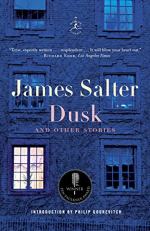
|
| Name: _________________________ | Period: ___________________ |
This test consists of 15 multiple choice questions and 5 short answer questions.
Multiple Choice Questions
1. What technique is used in the sentence, "On the curtained upper floors the legs of countesses uncoiled, slithering on the sheets like a serpent" (38)?
(a) Sibilance.
(b) Metaphor.
(c) Personification.
(d) Metonymy.
2. How does Frank feel when he smells leaf smoke on the way to Florence?
(a) Nostalgic.
(b) Ashamed.
(c) Confused.
(d) Triumphant.
3. What has Frank been shopping for while in Italy?
(a) Clothing.
(b) Jewelry and watches.
(c) Real estate.
(d) Art.
4. What does Eda's father do for a living?
(a) Raise chickens.
(b) Restore furniture.
(c) Sell cars.
(d) Masonry.
5. Why are most of the things that they see while window shopping in Florence unsuitable for Eda?
(a) They are meant for tourists.
(b) They are meant for furnishing a home.
(c) They are meant for upper class women.
(d) They are meant for adult women.
6. Which detail conveys Frank's continued attractiveness to women despite his age?
(a) The behavior of the German hotel manager's girlfriend.
(b) The comments of the employees at the coffee place in Como.
(c) The comments of the border guards as they cross into Como.
(d) The behavior of the Italian countesses in Venice.
7. When Frank tells Alan that he can drive Brenda to Rome himself, what does Brenda tell Frank?
(a) That one day Alan will get fed up with him.
(b) That he should have become a politician.
(c) That he has no idea how to treat women.
(d) That he is a lawyer even in his personal life.
8. What does Frank offer Eda while they are in the car riding around Arezzo?
(a) Alcohol.
(b) A fancy watch.
(c) A cigarette.
(d) Money.
9. In the sentence, "The blue car of the carabiniere lazed past," what does the word "carabiniere" mean (39)?
(a) Taxi driver.
(b) Tour leader.
(c) Police.
(d) Mayor.
10. How long have Frank and Alan planned to be in Europe?
(a) 1 week.
(b) 3 weeks.
(c) 1 month.
(d) 3 months.
11. At what time of year are Frank and Alan in Venice?
(a) Late in the fall.
(b) Midsummer.
(c) The very end of spring.
(d) The very beginning of fall.
12. Which is the best description of the husband and wife conversation that Frank mimics?
(a) Condescending.
(b) Earnest.
(c) Playful.
(d) Banal.
13. What is implied by the detail of the woman "dressed for dinner" getting out of a taxi in the morning outside Alan and Frank's hotel (39)?
(a) Alan's eyesight is poor.
(b) Italians are more relaxed about time.
(c) She has been out all night.
(d) Italy has different clothing standards.
14. Which word is twice used to describe the way Eda looks?
(a) Pure.
(b) Radiant.
(c) Angelic.
(d) Mischievous.
15. What reason does Eda give for refusing to go to Florence with Frank and Alan?
(a) She is not really interested in Frank.
(b) She has exams at school on Monday.
(c) She does not know what she will tell her parents.
(d) She is afraid to leave town with strangers.
Short Answer Questions
1. When Alan wonders, "Giotto--what would that mean to her?" what does "Giotto" refer to (39)?
2. What is implied has happened to Eda at the end of the story?
3. After they drop Eda off, what does Alan say to Frank about the encounter?
4. Why does Frank give the portiere 40,000 lire?
5. As Alan rides through the countryside outside Venice and as he walks around Padua, what seems to impress him most about Italy?
|
This section contains 606 words (approx. 3 pages at 300 words per page) |

|




